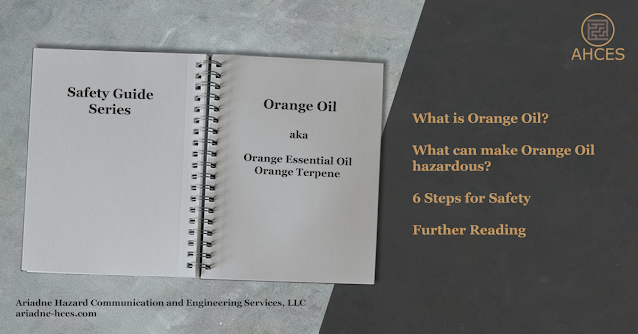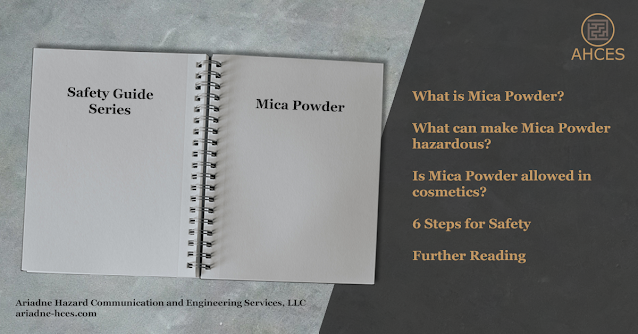Clove Oil Safety Guide
What is Clove Oil?
Clove Oil, sometimes written as Oil of Clove, is an essential oil derived from the clove plant, S. aromaticum. The primary active component of clove oil is the compound eugenol, an aromatic compound of the phenylpropene group. Per the PubChem database, clove oil also contains the aromatic compounds benzaldehyde, methyl salicylate, and eugenol acetate, as well as caryophyllene, ylangene, and 2-heptanone. This guide will primarily focus on the hazards of the eugenol component.
Clove Oil has the CAS Number 800-34-8.
Eugenol has the CAS Number 97-53-0.
When searching for clove oil in the component list of a safety document, such as a Chemical Label or a Safety Data Sheet, look for either of these CAS numbers.
Notable Properties of Clove Oil
At room temperature, clove oil is a liquid. It can either be clear or will have a pale yellow coloration. Over time with exposure to oxygen or UV, it can discolor to a darker brown color. To limit discoloration, store clove oil in a tinted glass bottle located in a cool, dark environment.
What Makes Clove Oil Hazardous?
The primary hazard of clove oil from the eugenol component is being an irritant, with skin, eye, and respiratory irritation occurring. There are also reports of contact dermatitis, with repeated exposure causing an acquired allergic reaction. The presence of caryophyllene and methyl salicylate also contribute to skin sensitization and oral toxicity respectively.
Since clove oil is made up of multiple organic compounds, it can burn in a fire and release potentially toxic levels of carbon dioxide and carbon monoxide.
Clove Oil Frequently Asked Questions
Is Clove Oil Toxic?
Clove oil is not listed as toxic on PubChem. However, methyl salicylate, which is a component of clove oil, is considered an oral toxin per the Hazardous Substances Data Bank. Additionally, according to the CAMEO Chemicals database, ingestion of large quantities can cause liver and gastrointestinal damage.
If clove oil is ingested, call a poison control center or emergency medical services, and seek appropriate medical treatment from a licensed medical professional.
Can Clove Oil Burn Skin?
Clove oil is not corrosive and cannot cause chemical burns. However, clove oil is linked to contact dermatitis. This means that repeated exposure can lead to the development of a skin allergy.
Clove oil is an organic substance and can act as the fuel source of a fire. Flaming clove oil can cause heat burns.
6 Steps for Safety
Step 1: Read the Warnings
When working with a product for the first time, always read all the safety documents first. This includes safety data sheets, which should be provided by the manufacturer or importer of the clove oil product. There may also be an OSHA chemical label, FDA cosmetics label, or a Consumer Protection label on the packaging of the clove oil product. These documents all contain important information on the hazards of the product and instructions on how to mitigate those hazards.
Different compositions in different products may cause additional hazards to be present beyond the properties of plain clove oil. Be sure to familiarize yourself with the differences between separate clove oil products.
Step 2: Prepare Your Workspace
Creating a safe workspace, sometimes referred to as engineering control, is a key component of working safely with any potentially hazardous substance.
Clove oil is a liquid in its pure form, which means it can easily flow when spilled, as well as seep into surfaces. Therefore, it is important to have a spill kit available with absorbent material to soak up and capture any spilled clove oil.
As clove oil can burn, even if it is not considered a flammable hazard for extra regulatory precautions, having a fire extinguisher on hand is recommended. Be sure the workspace is free of any ignition sources, such as sparking motors or open flames.
Step 3: Gather Your PPE
For handling concentrated clove oil, or pure eugenol, the
following PPE is recommended depending on quantity being handled and
engineering controls present.
- Gloves
- Basic disposable gloves, or other rubberized gloves, will prevent clove oil from touching the skin on the hands and causing irritation.
- Rubberized Apron
- A rubberized apron, or another body covering that prevents clove oil from soaking into clothing, is best to prevent skin exposure.
- Respiratory Protection
- A mask meant for organic vapors will protect the respiratory system from irritation.
- Eye Protection
- Safety goggles which form a protective seal around the eyes can be used to prevent clove oil splash from reaching the eyes.
Step 4: Clear Your Workspace
Having a clear workspace is an important part of safety. Clutter can cause accidents and can prevent you from noticing if something has spilled.
This is also a good time to double check any engineering controls present and to ensure there are no ignition sources around.
If you are working in a shared space, make sure anyone around you can also remain safe when you are working with clove oil. For those working at home, this can include family members and pets.
Step 5: Do The Work
If engineering controls and PPE are used properly, working with clove oil has minimal hazards.
As clove oil can cause contact dermatitis, it is particularly important to avoid skin contact. If clove oil does get on the skin, be sure to clean the area thoroughly with soap and water. If signs of an allergic reaction occur, such as redness or swelling, seek medical attention from a licensed medical practitioner.
If work cannot be completed in one sitting, be sure to properly seal any clove oil containers to prevent spills or accidental release when not in use.
Step 6: Clean Up
Clove oil may leave residue from any drips or small spills. Clean up clove oil with an absorbent material, such as paper towels, or a granular absorbent such as sawdust.
Be sure to dispose of any waste in accordance with local regulations.
Further Reading
The National Library of Medicine has a PubChem article on both Clove Oil and Eugenol.
Check out the AHCES Benzaldehyde Safety Guide for more details on one of the other components of clove oil.
Check out the Safety Guide Series Hub for more safety guides.
Sources Cited
National Center for Biotechnology Information (2024). PubChem Annotation Record for , EUGENOL, Source: Hazardous Substances Data Bank (HSDB). Retrieved July 11, 2024 from https://pubchem.ncbi.nlm.nih.gov.
National Center for Biotechnology Information (2024). PubChem Annotation Record for , METHYL SALICYLATE, Source: Hazardous Substances Data Bank (HSDB). Retrieved July 12, 2024 from https://pubchem.ncbi.nlm.nih.gov.
National Center for Biotechnology Information (2024). PubChem Compound Summary for CID 8051, 2-Heptanone. Retrieved July 12, 2024 from https://pubchem.ncbi.nlm.nih.gov/compound/2-Heptanone.
National Center for Biotechnology Information (2024). PubChem Compound Summary for , Clove Oil. Retrieved July 11, 2024 from https://pubchem.ncbi.nlm.nih.gov/compound/Clove-Oil.
National Center for Biotechnology Information (2024). PubChem Compound Summary for CID 240, Benzaldehyde. Retrieved July 12, 2024 from https://pubchem.ncbi.nlm.nih.gov/compound/Benzaldehyde.
National Center for Biotechnology Information (2024). PubChem Compound Summary for CID 5281515, Caryophyllene. Retrieved July 12, 2024 from https://pubchem.ncbi.nlm.nih.gov/compound/Caryophyllene.
National Center for Biotechnology Information (2024). PubChem Compound Summary for CID 3314, Eugenol. Retrieved July 11, 2024 from https://pubchem.ncbi.nlm.nih.gov/compound/Eugenol.
National Center for Biotechnology Information (2024). PubChem Compound Summary for CID 7136, Eugenol acetate. Retrieved July 12, 2024 from https://pubchem.ncbi.nlm.nih.gov/compound/Eugenol-acetate.
National Center for Biotechnology Information (2024). PubChem Compound Summary for CID 4133, Methyl Salicylate. Retrieved July 12, 2024 from https://pubchem.ncbi.nlm.nih.gov/compound/Methyl-Salicylate.
National Center for Biotechnology Information (2024). PubChem Compound Summary for CID 20055075, Ylangene. Retrieved July 12, 2024 from https://pubchem.ncbi.nlm.nih.gov/compound/Ylangene.
National Oceanic and Atmospheric Administration (n.d.). Eugenol. CAMEO Chemicals. Retrieved July 12, 2024, from https://cameochemicals.noaa.gov/chemical/20399





Comments
Post a Comment